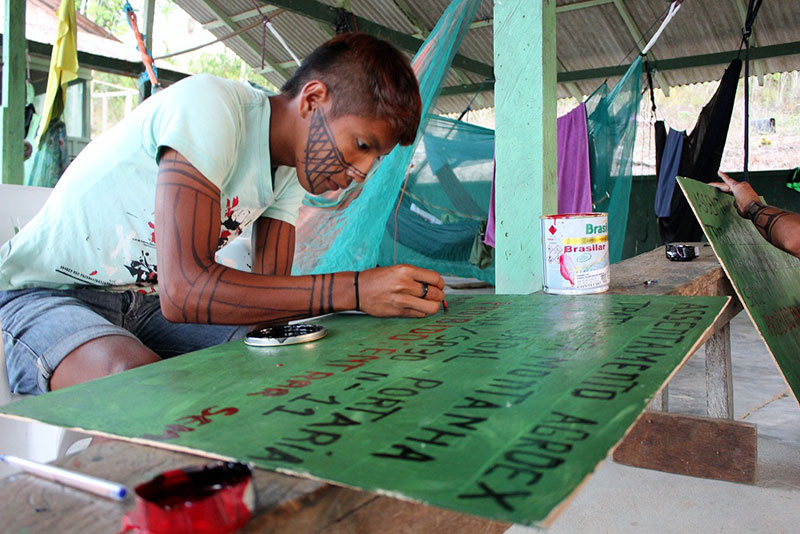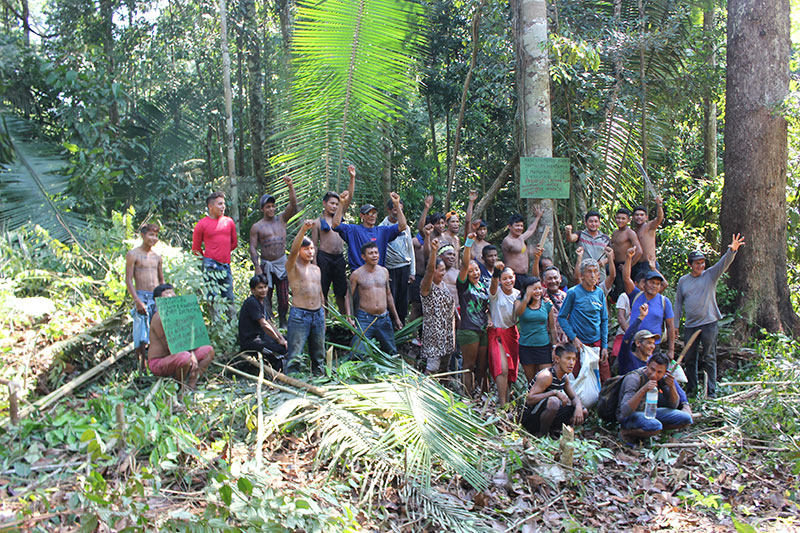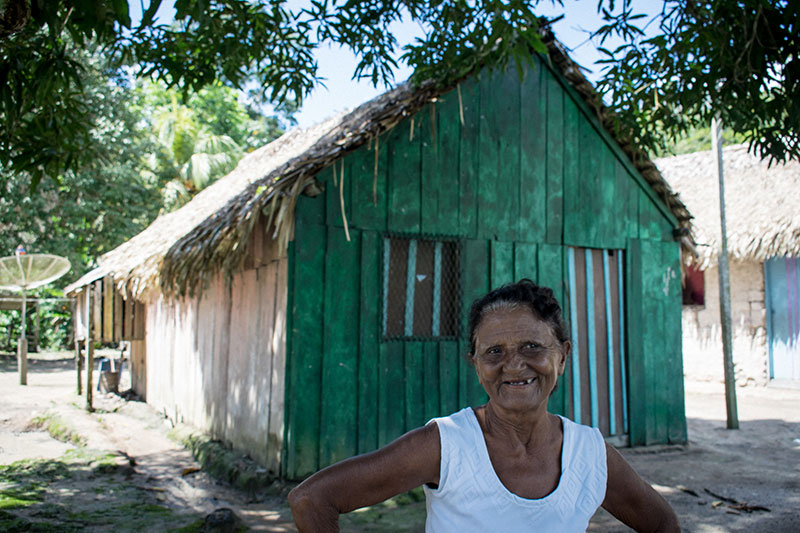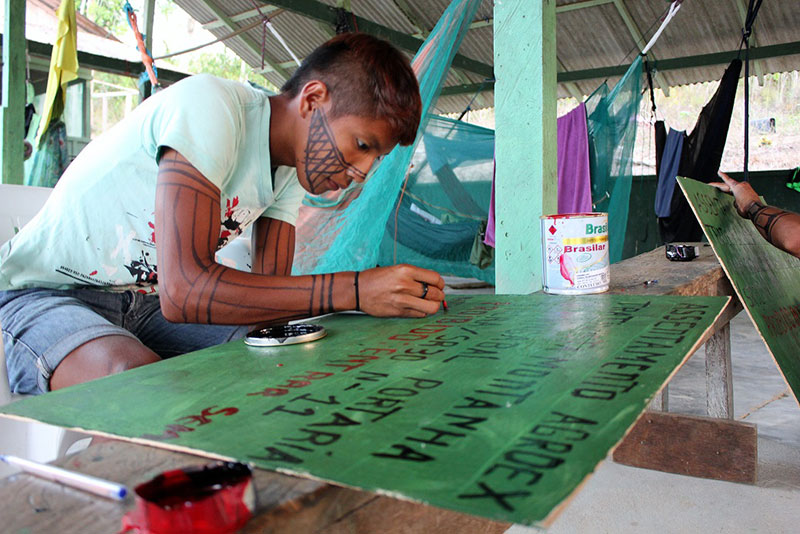One of the biggest challenges facing Indigenous and traditional communities fighting to defend their territories around the world is a lack of universally recognized maps and physical markers demarcating the boundaries of their rightful land. While no ironclad protection, the production of official maps and clear territorial markers that communities, governments, courts and extractive corporations can agree upon is one of the most important tools outside allies can help provide to curtail destructive encroachment of ancestral lands. This is a story of direct support from afar facilitating successful efforts of a frontline community in Brazil’s Amazon to demarcate their own traditional lands under siege by outside forces.
Issue Area: Traditional Land Defense
Location: Brazilian Amazon
Media:
BBC News – Amazon forest sees new alliance emerge
Monga Bay – Amazon community on Tapajós River invaded by wildcat miners
Montanha-Mangabal is a riverside community made up of 101 families whose territory extends nearly 50 miles along the Tapajós River in the Brazilian Amazon. Originally descended from migrant rubber tappers, the river-dwellers of Montanha-Mangabal have occupied their current territory for eight generations – a total of 140 years. The families of the Montanha-Mangabal community depend on the Tapajós River and the surrounding rainforest as the basis for their subsistence livelihoods and this biologically rich, intact ecosystem, some of the best forest remaining in the region, is central to their identity as traditional occupants of this land.
In 2006, the community was recognized by the federal government as the first “traditional riverine” community in Brazil. This designation extends legal protections and territorial rights to communities with distinct forms of social organization, traditional knowledge, and subsistence practices that occupy and rely upon a territory and its natural resources for their survival.

Photo by AILÉN VEGA
The hundred-plus families that comprise the Montanha-Mangabal community live on the banks of the Tapajós River in the Brazilian Amazon. Descended from rubber tappers who settled this land a century and a half ago, the river-dependent people of Montanha-Mangabal have now called their current territory home for eight generations. The families of the Montanha-Mangabal community depend on the Tapajós River and the rainforest around it for their subsistence livelihoods and this biologically rich, intact ecosystem, some of the best forest remaining in the region, is central to their cultural identity.
In 2006, the community gained federal recognition as the first “traditional riverine” community in Brazil. Despite this designation, the traditional lands of Montanha-Mangabal have continued to be threatened and encroached upon, especially from illegal loggers and wildcat miners. Years of fighting for their land rights led to the Montanha-Mangabal being declared an Agro-extractive Settlement Project (PAE) in 2013 by Brazil’s National Institute of Colonization and Agrarian Reform (INCRA).
But this did not stop the announcement of plans for the Jatobá hydroelectric dam, one of three 3 dams proposed along the Tapajós River. The Jatobá dam would threaten the community’s core source of livelihood, causing flooding of key agricultural lands, polluting the river, and likely destroying local fish and wildlife populations.
This kind of industrial-scale incursion into this relatively pristine forest region strikes to the heart of the communities who live there. “This river is my mom, its my father, its as if all my family members were here,” says Pedro Braga, a community member that lives in the local village of Sapucaia.

Neighboring Indigenous groups joined forces with riverside villagers to install markers demarcating traditional lands to fend off wildcat miners and illegal loggers
Photo by Fernanda Moreira
Seu Chico Catitu, recognized as one of the best forest guides in the region, stated “We did the auto-demarcation so that they [land grabbers] would know where their territory ends and where ours begins because there are always those people saying, ‘I don’t know where my territory is and where your is.’ So I believe that after today, they will know that they cannot come into our territory.”
Though unlikely allies at first, Montanha-Mangabal community members have teamed up with nearby Amazonian Indigenous communities including the Munduruku, Kayabí and Apiaka Peoples and have been actively protesting with them shoulder to shoulder against the construction of the hydroelectric dams.
The Munduruku people felt indebted to the Montanha-Mangabal community and have offered their direct assistance in the auto-demarcation of Montanha-Mangabal’s territory. As Chief Juarez from the village of Sawré Muybu stated, “There is only one land and we are only one community. If you sink, we sink with you.”

Photo by Adriano Maneo
The Community Action Grant through Rainforest Action Network supported the community to undertake the relatively expensive and labor intensive work of creating handmade plaques and erecting them along the boundaries of the community’s territorial borders, a process which required multiple week long trips through the forest to complete.
Other Indigenous groups in the Tapajós region (including Kaxuyana, Tiriyó, Xeréu, Wai Wai, Txikyana, and Apiaká peoples) also participated in Montanha-Mangabal’s auto-demarcation, further strengthening regional alliances. Their transportation and food was supported through these funds and some of their communities are considering organizing their own auto-demarcation efforts in the future as well.
These community-driven efforts resulted in numerous stores in regional and international media, including a BBC story headlined Amazon forest sees new alliance emerge. Monga Bay also featured an in-depth article on the issue titled Amazon community on Tapajós River invaded by wildcat miners.
Explore more of RAN’s Community Action Grants
Become a Community Action Grant donor
